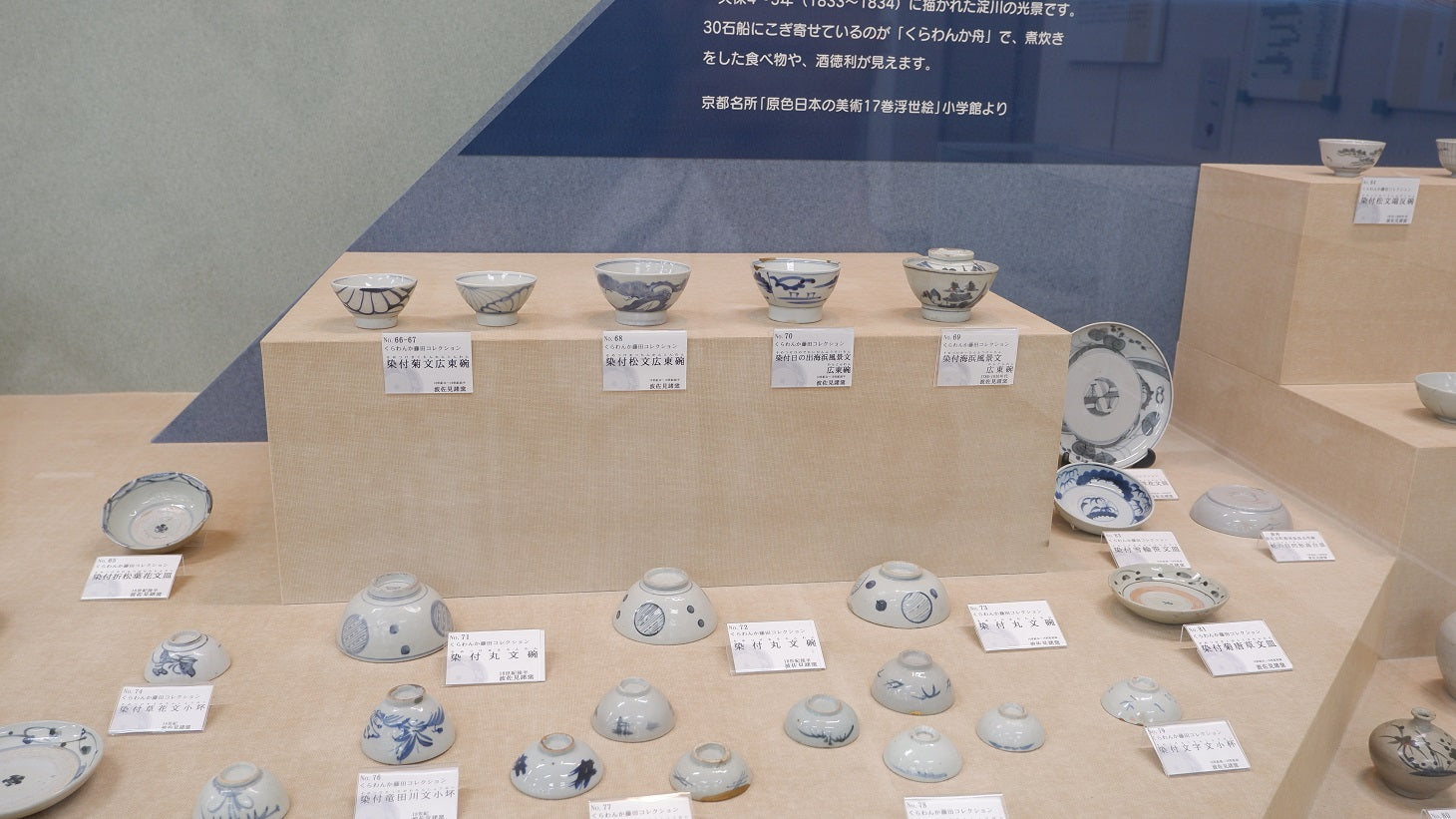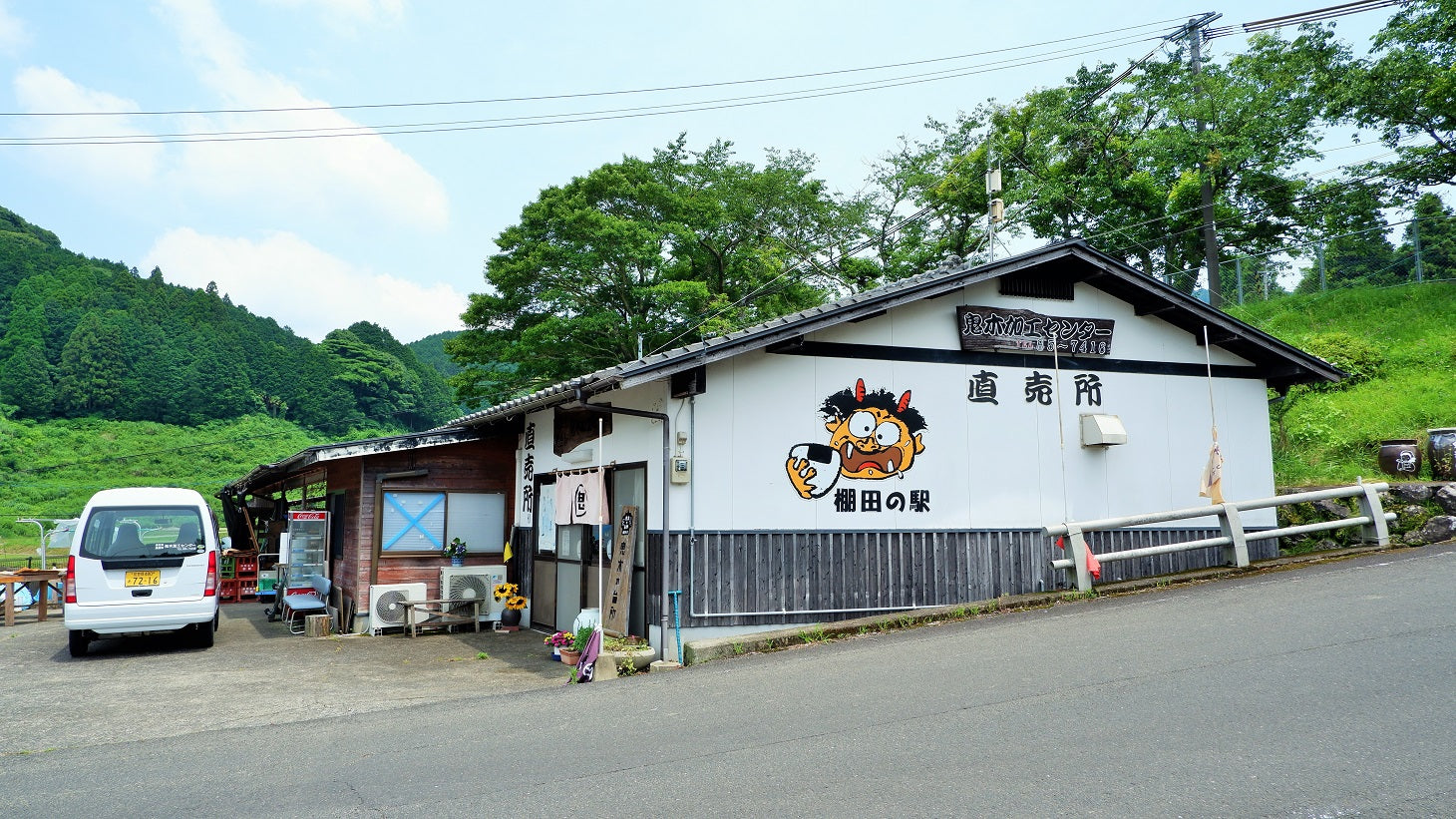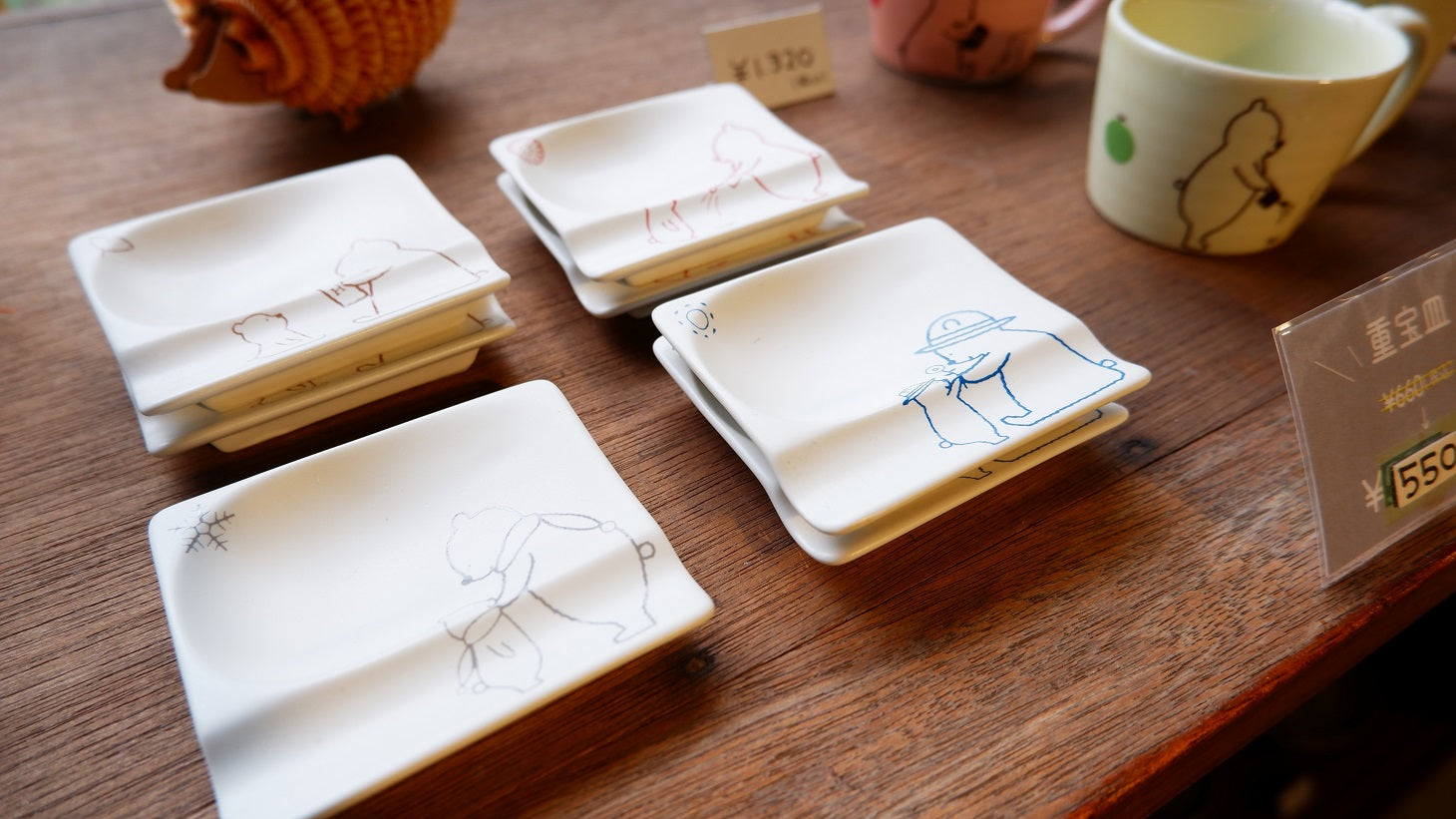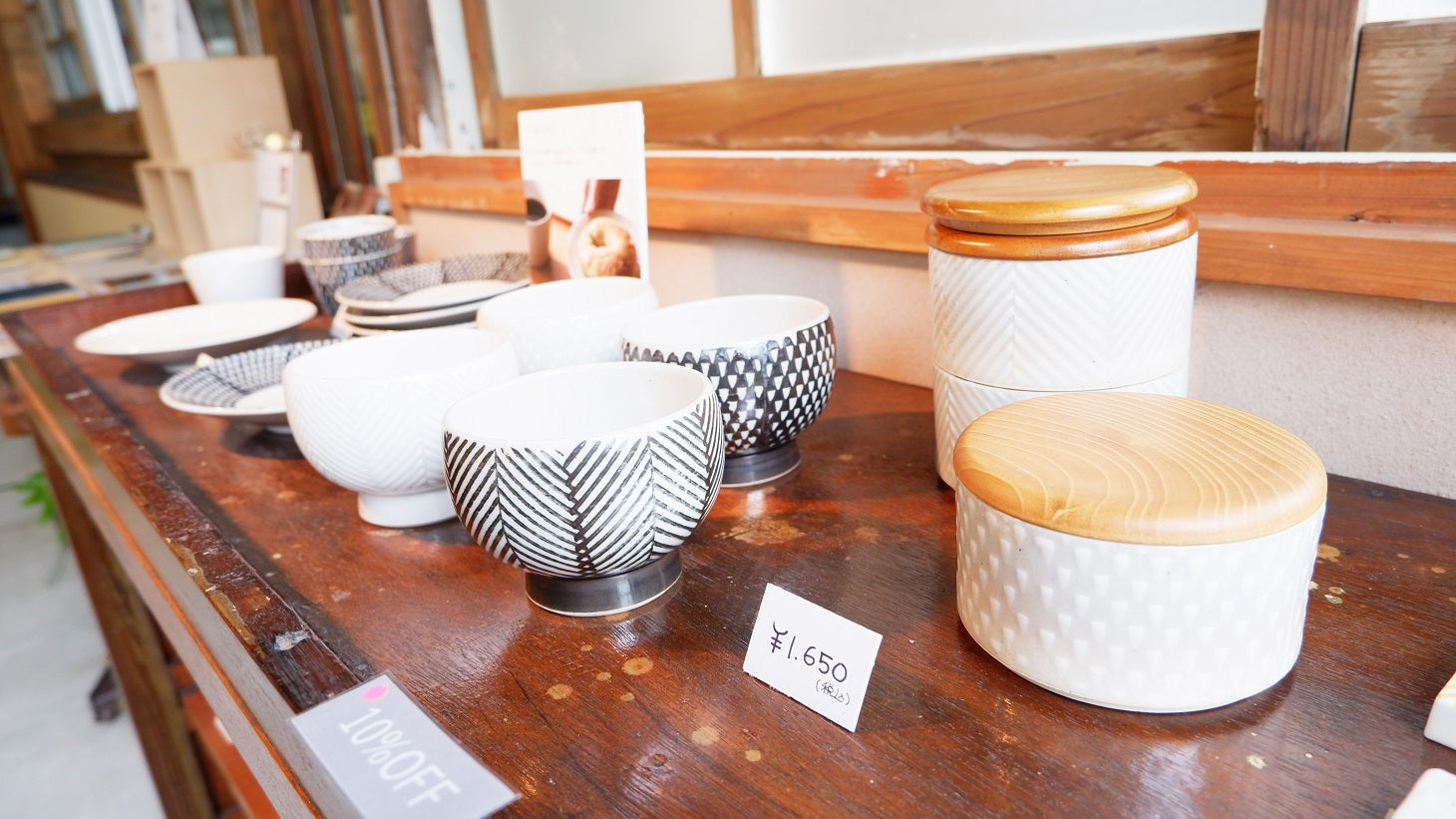A travelogue by UTSUWABI editorial staff visiting pottery makers and artists across the country.
This time, we traveled to Hasami Town, a pottery town famous for Hasami ware.
Hasami Town is a small town with a population of about 15,000 located right in the middle of Nagasaki Prefecture.
Hasami ware is a pottery that has become popular in recent years. They are durable, relatively inexpensive, and come in many stylish designs.
I went on a solo trip to relax and enjoy Hasami, which is different from the pottery festival.
I would be happy if you could read this article and feel like traveling even just a little bit.
To Hasami Town
The plan is to arrive at Hasami Town at 9 a.m. and leave Hasami Town around 6 p.m.!
| Travel Plan< /strong> | |
| 9:00 | Painting experience at Kuwarankan |
| 11:30 | Nakaoyama Noborigama Observatory |
| 12:00 | Oniki Rice Terraces |
| 12:30 | Lunch and stroll in the Nishinohara area |
| 14:00 | Gallery tour O-YANE・WAZAN・Aiyu |
| 16:30 | Take a break at the cafe |
| 17:30 | Tojiro, pizza takeout |
| 19:00 | Going home |
We used a car for transportation.
●
By car
From Fukuoka: 5 minutes from Arita Hasami IC on the Nishi-Kyushu Expressway.
From Nagasaki
Airport: 15 minutes from Ureshino IC via Nagasaki Expressway.
●
By train
From Fukuoka
JR Limited Express Midori/Huis Ten Bosch To JR Arita Station
10 minutes by
taxi from JR Arita Station
*Rental bicycles, excursion taxis, and shared taxis are also available.
Kurawankan
First, learn about Hasami ware.
Start from "Kurawankan (Tourist Exchange Center)".

The 400-year history of Hasami ware, its characteristics, and how it is made are displayed in an easy-to-understand manner.


The exhibits are organized by era, so you can understand the characteristics of each era.

The first floor is a product hall.

It is said that Hasami handles the best products.
The staff responded kindly and said, "Please feel free to ask
me anything."
Painting experience
We had a painting experience here (reservation required).

Painting is done using a dye called gosu.
Since I went during the rainy season, I created a polka dot pattern to represent rain.
Drawing a circle with a
brush is surprisingly difficult...
*There are also other activities such as potter's wheel turning.
Reservations are required one week in advance.
By the way, you can get information about recommended sightseeing courses at the tourist center on the first floor.

Later, the painted vessels arrived!
I was very excited for several weeks until it arrived, wondering how it
would turn out.
If you make it yourself, you will love it even more.
Go to the pottery park next door

The "World Kiln Plaza" has 12 reproductions of rare kilns representing the world from ancient times to early modern times.
To the climbing kiln observation deck of Mt. Nakao
Next, we will go to Mt. Nakao where there are many potteries.
We arrived at Nakaoyama Community Center.

A large number of works by Nakaoyama's pottery are on sale here.

There are also products from potteries that are only sold here, and some people come every three months to buy pieces
from their favorite pottery.
There are wonderful works lined up.
Next, we moved to the observation deck to see the world's largest climbing kiln, "Nakaonokami Noborigama."
Located 1 minute by car from the Exchange Center.

What looks like a terraced field in the distance is the climbing kiln.
Oniki Rice Terraces
Next, go to Oniki rice terraces.

This place has been selected as one of Japan's "Top 100 Rice Terraces".
The original scenery of Japan will
cleanse your soul.
There is also a direct sales store, so I stopped by.

Oh, I guess it's a farmer working outside.

The pickled plums are dried in the sun.
Hello....
There's no reply...

It was a scarecrow! That's right, this place is also famous for its scarecrow festival.
After breathing in the delicious air, I felt hungry.
Nishinohara area
Jump from the rice terraces to the fashionable Nishinohara area.

The Nishinohara area is a commercial complex that has been renovated from a pottery factory that has been around since the Edo period.
Listed with general stores, cafes, climbing facilities, and more, this is the most talked-about fashionable spot.

Go to the cafe Monne Lugi Mook.
I will have coconut milk curry.

It's just the right amount of spiciness, with a perfect balance of coconut richness and sweetness.
Add fish
sauce to your preference. A taste of Southeast Asia!
The rice has a garlic scent. It packed a punch.
Since I was full, I took a walk around the area for some
exercise after dinner.
Go to "GROCERY MORISUKE" which sells organic and other carefully selected foods.

I bought fair trade coffee and chocolate.
There were also galleries and miscellaneous goods stores, and there
were lots of cute things.
We then left the Nishinohara area and went to Imazato Liquor Store in search of local sake.

Imazato Sake Brewery is a long-established sake brewery that has been around since the late Edo period (founded in 1772).
Our signature product is the Japanese sake "Rokujuyoshu Rokujuyoshu".
The store owner recommended Rokujuyashu,
so I bought it and took it home. It is said that you can also sample it.
If it comes with alcohol, it's an accompaniment to alcohol.
I went to the direct sales store "Doronko no Sato"
to find something to go with alcohol.

I bought cucumbers from Hasami, asparagus, homemade yuzu miso, and parboiled whale from Sonogi Town.

Wow. I can't stop grinning.
Gallery tour
Now, let's finally go around the gallery in search of Hasami ware.
First, go to OYANE by Saikai Toki.

There are works by artists on the first floor, and outlet products are lined up on the lower floor.
The staff
explained the work very carefully.

The attached COYANE is a Vietnamese restaurant.
It might be a good idea to come here when Nishinohara is
crowded.
Next, go to WAZAN OUTLET SHOP opposite OYANE.

There are also rows of low-priced Hasami-yaki items lined up here.
It seems like you can find some bargains.
Go to aiyu's gallery.

aiyu is a Hasami ware trading company founded in 1985.

At the beginning of our founding (1896), we were a pottery manufacturer, and since 1985 we have specialized in the wholesale business.

Cute colored vessels are lined up in a spacious space.

This place was originally a painting place.

This is a plate called "Jyuho Plate."
It has a recess that can be used as a chopstick rest, and a device that can store liquids. It can be used for a variety of purposes, including a chopstick rest, a soy sauce plate, and small sweets.

The new product has a smoky and matte color.
This seems to work.
I purchased a pink useful long plate.
The bird series is a hand-carved motif by Ryota Ishihara, a ceramic designer from Hasami Town.

The mold is carved with relief holes, making the design stand out.
We also have various original products.
Everything seems easy to use and light, so I'm confused.
I also purchased choko and rice bowls. I want to drink local sake with this choko soon...
Interview
We asked Yuji Koyanagi, the second generation owner, about various things.

‥‥What are the characteristics of Hasami ware?
"It's a pottery specialized for everyday use."
‥‥Hasami ware is made using a division of labor system.
"Ceramics in areas called the Hizen district, such as Hasami, Arita, and Mikawachi, have a division of labor system.
They can be divided into more detailed categories such as fabric shops, mold shops, pottery shops, wholesalers, etc., but by adopting this division of labor, it is possible to make even more particular ceramics. ”
‥‥The division of labor allows for mass production.
"When you hear of mass production, you probably think of mechanization, but although it does exist, there are many parts of Hasami ware that are still handmade by people.
I think there are many people who are interested in that, and I think those who choose (Hasami ware) also find it attractive.
Even though there are places where the products are made by hand, the prices are not that high.
I think this is where
the value of Hasami ware lies. ”

‥‥What kind of products does IU handle?
"We sell pottery makers' products wholesale, but I don't think that alone differentiates us from other companies in the industry.
We develop original products in cooperation with pottery makers, fabric shops, and mold shops.
For example, something that was originally made with yellow glaze at the pottery may be changed to red and sold only here, or someone may come up with an idea for an original shape, take it to a mold shop, and have the pottery make it from there. I also receive them.
Each pottery has its own characteristics, and each pottery has different techniques and fields of expertise, such as
being good at painting and printing.
We are able to bring out these qualities and sell products that cannot be found
anywhere else. ”
‥‥It's like a producer.
“Even though we are a trading company, we are involved in a wide variety of fields.
I don't make things, but I sell them by thinking about how to use them and how much to sell. ”
‥‥Which products are you currently focusing on?
"I don't have anything that I'm totally recommending, but I'm making various improvements to the contents of the
current series.
I'm trying to change the colors and adding more items."

The "motte" series is a broader interpretation of the "e series," which is designed with universal design in mind, and is designed to be easier to use for everyone from children to the elderly.
Our signature product, "ORIME," was developed based on my experience working in the apparel industry to express the "texture" of fabrics. ”

"The pottery owner had an interesting technique, so it was born from there."
‥‥The Golden Week Pottery Festival has been postponed for the second year in a row.
What kind of response did you
receive at IU?
"We held an event that requires reservations.
Without the main venue, it was unknown how many customers would come, but the first day on the 29th was fully booked and customers came even during the holidays.
Up to 8 groups came to the gallery for 1 hour, with 15 minutes of ventilation.
We had people look at our
products for as long as 30 minutes or as long as an hour, and we received comments such as "I'm glad I was able to
take my time and relax." ”
‥‥Certainly, this kind of style is nice for people who don't like crowds.
"I think this kind of style is better than the busy venue of the pottery festival.
I felt that if we pursued it in real life, there would be people who wanted it.
I think the combination (with
events) will be very important in the future. ”
‥‥What do you find attractive about being involved in Hasami ware?
"We are proud that people of the same generation as ourselves are enjoying and using it.
Seeing that kind of thing
makes it fun and rewarding for us.
If a customer using the product says, "I want something like this" or "I want something like this to happen here," I would be happy to make a suggestion. I think it's good. ”
To the creator's site
Next, Mr. Koyanagi introduced us to a special tour of the "fabric shop" (Mr. Minoru Fukuda) (general tours are not available).

Here, the mold is made using a method called pressure casting.

Pour the clay into the plaster mold using pressure.
The mold is made of gypsum, and the gypsum absorbs moisture from the soil.
After about 20 minutes, the soil
dries and is carefully removed from the mold.

After removing from the mold, gently smooth out any burrs around the edges with a sponge.

I felt that the fact that this kind of manual labor remains is what gives Hasami ware its flavor.

There are many different types of molds, and the larger they are, the more work and space they take, so the price goes
up.
The unit price will also go up for small but elaborate items.
Once finished, the pottery is returned to the kiln for unglazed firing.
After that, it goes through the process
of sketching → glazing → final firing → overglaze → final firing → inspection before being shipped to a trading
company.
I felt that due to the division of labor, even one pottery was completed by the hands of many people.
Go to cafe "COFFE MUSUME"
After leaving the pottery site, we headed to "COFFE MUSUME" which had just opened in February.


Choose your favorite beans and have coffee time.
We also received the cake in a cute container that looked like it had a picture frame of cake in it.
Hot spring
Finally, go to Yujiro.
Take a bath in the hot springs to heal the fatigue of your trip.

Hasami Onsen is a hot spring with a high concentration of carbonated water.
There are three indoor baths, all of
which are fed directly from the source.
Your skin will become smooth.
I wouldn't go so far as to say that it looks just like Hasami ware. Yeah, no.
Finally, we took out pizza at Seishun no Sato, DA TOMMY.

Go home
When I got home, I put the vegetables and whale I bought at the direct sales store on the IU plate I bought.
Cooking becomes more fun when you have new plates.

Then, enjoy local sake with a Hasami-yaki choko.
Bliss.
It was a day filled with both heart and stomach.
It was a wonderful trip
Hasami -cho has many nice places that can't be turned around in one day.
There are various galleries, and there are various styles of Hasami ware, and I felt that it was very deep.
I want to visit again.
I felt that I wanted to come back to meet a nice person, a wonderful nuts, and a wonderful scenery.
In addition, you can see the other Usumi -yaki containers here.
May you enjoy your daily meals with your favorite utensils.